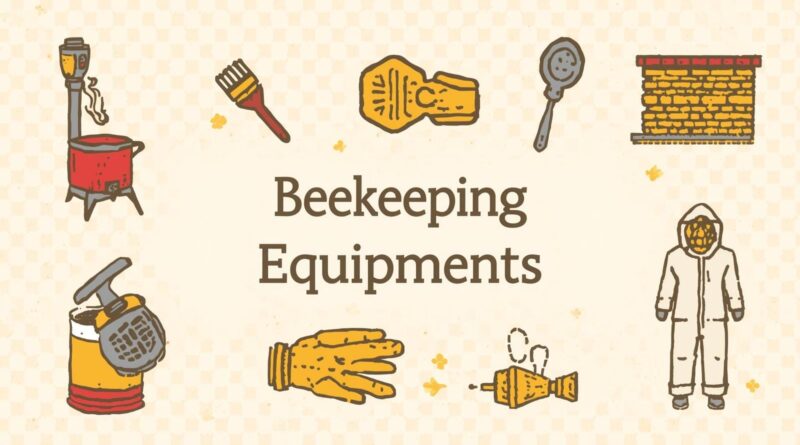Other Equipment Needed for Beekeeping
Title: Other Various Beekeeping Equipment
Beekeeping, or apiculture, involves more than just bees and hives. It requires a variety of modern beekeeping tools and protective gear that help beekeepers manage colonies safely, collect honey efficiently, and protect themselves from stings. Let’s explore some of the most important equipment used by beekeepers in a simple and easy-to-understand way.
- Smoker – Beekeepers gently release smoke using a tin can with a spout and bellows to calm bees during handling. A bee smoker is one of the most essential beekeeping tools. Beekeepers use it to calm the bees before opening the hive. It consists of a metal canister that holds burning materials like dry leaves, sawdust, or coconut husks, and a bellows that gently pumps air to release cool smoke through a spout. When the smoke reaches the hive, the bees sense a natural fire warning and start consuming honey to prepare for an escape. This makes them calm and less likely to sting. The smoke also masks their alarm pheromones, helping the beekeeper inspect the hive peacefully.
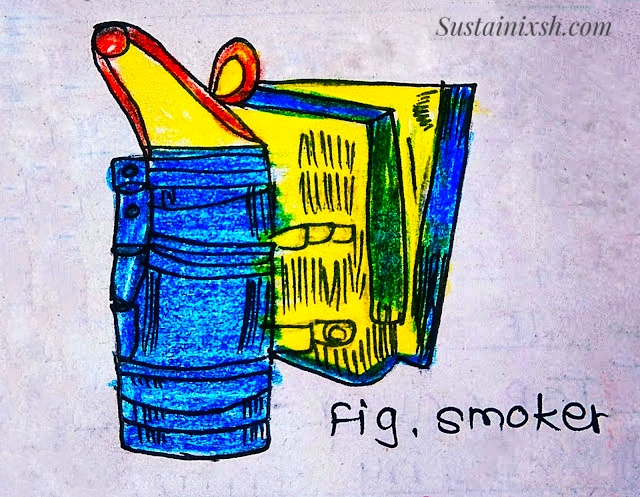
2. Hive Tool – They use a flat steel tool to separate hive boxes, remove frames, and scrape off glue or comb pieces. The hive tool is like a beekeeper’s mini crowbar. It’s a small, flat, steel instrument used for several purposes during hive inspection. Beekeepers use it to separate hive boxes, lift frames, and scrape off excess wax or propolis (bee glue) that builds up inside the hive.
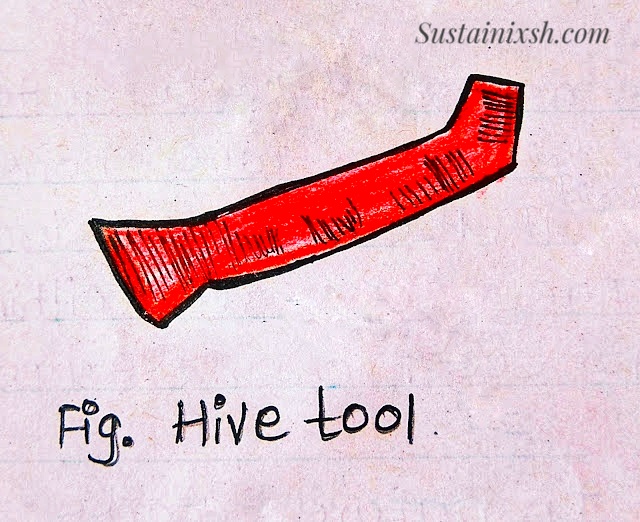
Because bees seal cracks with sticky propolis, the hive tool becomes extremely useful in loosening tight parts without breaking them. It also helps maintain clean and well-managed hives, making it one of the most used apiculture tools in every bee yard.
3. Overall – Beekeepers wear protective overalls made of thick, cheap white drill fabric to prevent bee stings. To stay safe from bee stings, every beekeeper wears a protective overall or bee suit. It’s usually made from thick, white cotton or drill fabric, which bees find less threatening. The suit covers the entire body, preventing bees from reaching the skin.
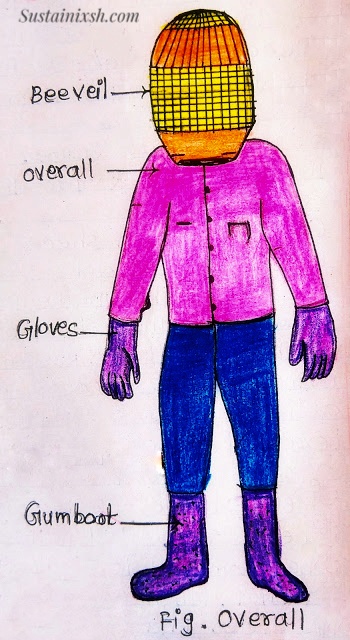
White color reflects heat and makes the beekeeper visible to the bees, helping them stay calm. These overalls are lightweight, breathable, and easy to clean—making them comfortable for long working hours in the apiary.
Pro Tip: Dark or woolen clothes can attract and irritate bees, so always wear light-colored suits during hive work.
4. Bee Veil – Beekeepers wear veils made of mesh, silk, or cotton to protect the face and neck from stings. The bee veil is another vital piece of beekeeping protective gear. It covers the head, face, and neck—areas most vulnerable to bee stings. A veil is usually made from fine mesh, cotton, or silk fabric, which allows clear visibility and proper airflow.
It attaches securely to the overall or hat, forming a complete barrier against bees. This safety equipment gives beekeepers the confidence to inspect hives closely without fear of stings.
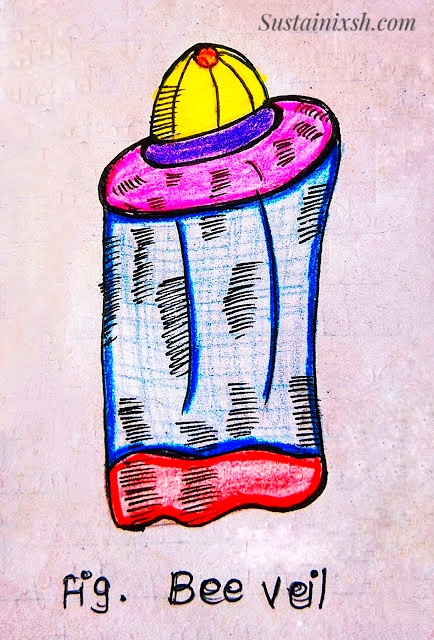
5. Bee Brush – They use a bee brush to remove bees from honeycombs before extraction. The bee brush is a soft-bristled tool used to gently sweep bees off honeycombs or frames before honey extraction. It ensures that bees are safely removed without harming or crushing them.
Instead of shaking the frames which could injure bees the beekeeper lightly brushes them away, allowing safe honey collection. The brush should always be used slowly and gently, as rough brushing may anger the bees.
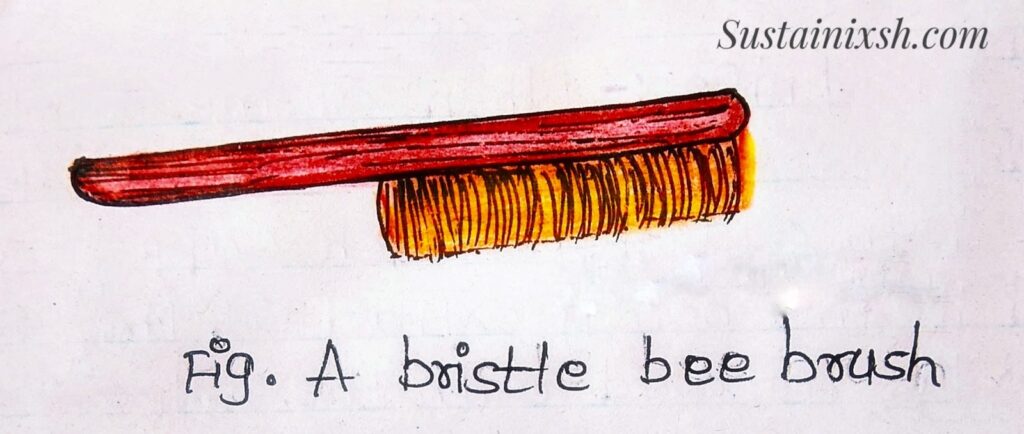
6. Division Board (D.B) Feeder – Beekeepers use this frame-like wooden trough to feed sugar syrup during heat, dearth periods, or water shortage. During times of food shortage, such as extreme heat or dry seasons, beekeepers help their colonies by providing artificial feeding. The Division Board Feeder (or D.B. Feeder) is a wooden trough-like frame placed inside the hive to hold sugar syrup or honey solution.
Bees drink from this feeder when natural nectar sources are limited. This tool ensures that bees remain healthy, active, and strong even during dearth periods. It plays a key role in sustainable beekeeping practices and colony survival.
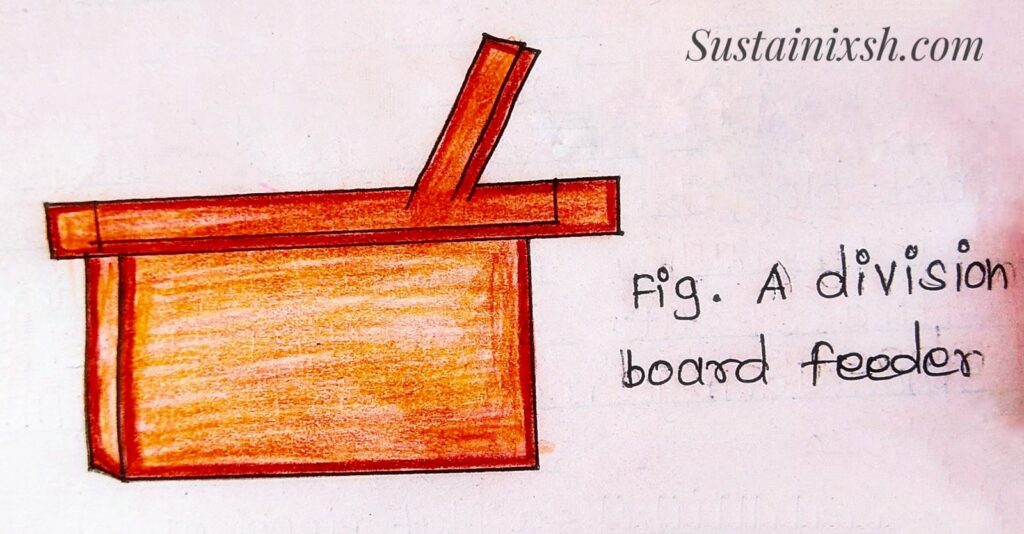
7. Queen Cages – Beekeepers use cages (like the Miller queen introducing cage) to introduce a new queen into a queen less colony so that bees gradually accept her. The queen cage is a small container used to introduce or transport a queen bee safely into a new or queenless colony. The most popular type is the Miller queen introducing cage, which allows worker bees to slowly get used to the new queen’s scent.
This gradual introduction prevents the worker bees from attacking her. The cage has small holes filled with candy or sugar paste, which the bees eat through over time, allowing the queen to walk out safely and become accepted by her new colony.

Did You Know? Successful queen introduction ensures stronger colonies and better honey production.
8. Queen Cell protector: This helps to protect the queen bee from various predators. A queen cell protector is a small plastic or wire device used to safeguard developing queen cells from being damaged or eaten by worker bees, predators, or other queens.
It fits over the queen cell like a shield, keeping it secure until the young queen emerges. This simple yet smart device is very important in queen rearing and bee breeding programs, ensuring healthy queen development.
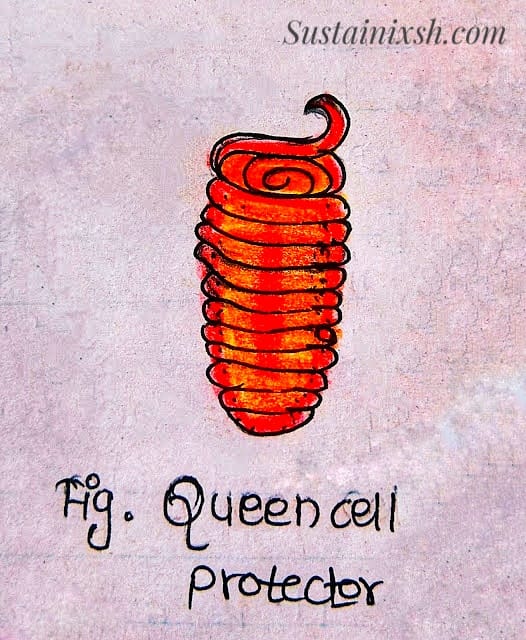
Every tool in beekeeping has a special purpose, from calming bees with a smoker to protecting the queen with a cell protector. Together, these modern beekeeping tools make hive management smoother, safer, and more efficient. They not only help beekeepers collect pure, high-quality honey but also ensure that the bees remain healthy and stress-free.
With the right beekeeping equipment and careful handling, apiculture becomes an enjoyable, educational, and eco-friendly practice that benefits both humans and nature.

